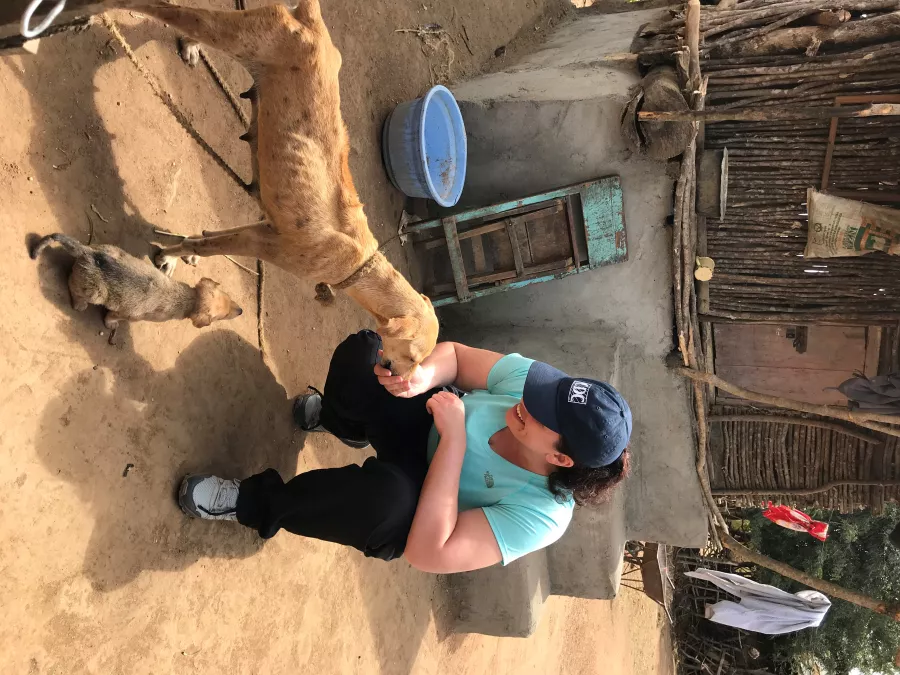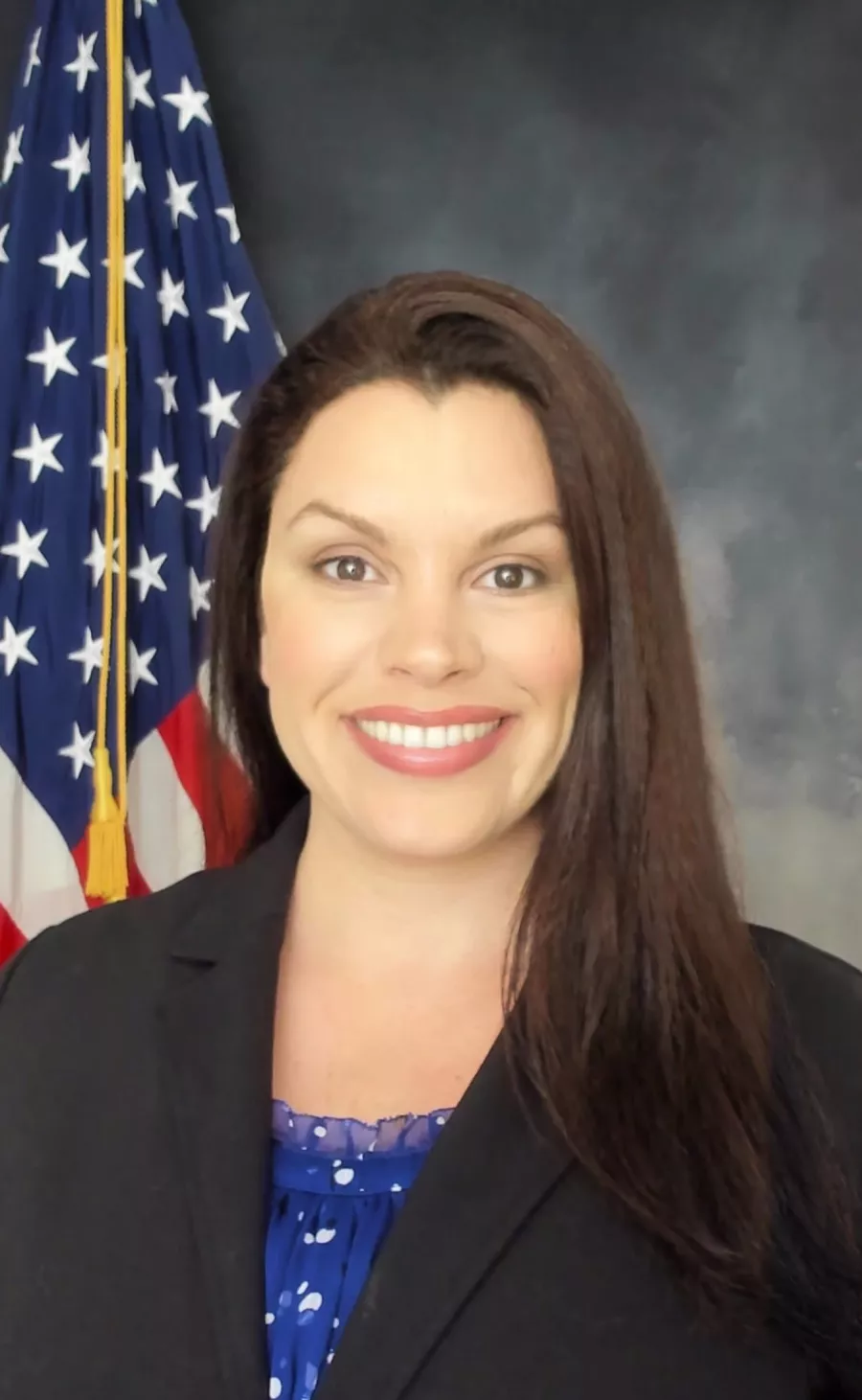Emily Pieracci was there when COVID-19 arrived on America’s shores.
As one of the Centers for Disease Control and Prevention’s top specialists in viruses that spread from animals to humans, Pieracci deployed to California in February 2020 to greet American passengers from the Diamond Princess cruise ship, which had suffered an outbreak during a cruise of the Western Pacific at the start of the pandemic.
As passengers arrived after two weeks isolated in their staterooms and a grueling plane ride to the U.S., Pieracci remembers incredible teamwork among federal and state agencies and local hospital officials who all felt the urgency of taking care of the sick and protecting the community around them just as the world was beginning to learn about the threat of COVID-19.
“This is my home. I had a tremendous amount of empathy for the passengers on the Diamond Princess,” says Pieracci, a Richland native who graduated from Western in 2002. “I can’t imagine how stressful and exhausting and scary it was being stranded off the coast of Japan, not knowing what was going to happen to them as more and more people are getting sick.”
She has since deployed several times throughout the country to assist with COVID response, most recently to help with testing Afghan refugees after the U.S. departure from the country in August 2021.
From Bellingham to Sierra Leone
Pieracci took a circuitous route to her current position as leader of the Zoonoses Team at the CDC’s Quarantine and Border Health Services Branch, starting with a double major in psychology and history at Western. Studying behavioral models of rodents in Associate Psychology Professor Michael Mana’s research lab at Western opened her eyes to potential career paths. After graduating she went to Central Washington University for her master’s, where her work with chimpanzees got her hooked on the idea of helping animals through veterinary medicine.
In her fourth year of veterinary school at Washington State University, she treated a bomb-sniffing dog from the Hanford Nuclear Site during her neurology rotation, setting in motion her next step: She joined the U.S. Army after graduating with her Doctorate in Veterinary Medicine, working with K-9 units and helping to develop a training course that taught K-9 handlers how to provide emergency first aid to their dogs.
“I absolutely loved it. I loved being in that training environment. I loved being with the working dogs,” she says. “I really enjoyed my time in the military, but I also realized I wanted to move away from treating single animals and move toward populationbased medicine.”
So she earned a Master of Public Health at Johns Hopkins University, where she learned about epidemiology, infectious diseases and global health. After graduation she applied for the Epidemic Intelligence Service Fellowship, which is where she got her start at the CDC. Less than a month after her first day, she was flying to the front lines of an Ebola outbreak in Sierra Leone.
She spoke in-depth about her experience in Sierra Leone for a conversation recorded by StoryCorps in 2016. Getting off the plane, she remembers being struck by the enormity of the job, and how much she didn’t know. But she adapted despite the fear, initially working at a district health office to set up surveillance and a barrier to keep Ebola out of the capital city of Freetown. She helped people find loved ones who had been taken away with Ebola symptoms without knowing where, or even if they were still alive. She also volunteered in a nearby hospital to help receive and treat Ebola patients and visited neighborhoods and villages to do contact tracing and community education. She even worked on burial teams, a devastating but crucial job.
“It was a really steep learning curve,” she says. “I am so grateful for that experience. It left a lasting impression on me and really solidified that I wanted to be involved in public health and outbreak investigation for the rest of my career.”
What she didn’t realize was that the strategies she had learned during her Ebola deployments—washing her hands, not touching her face and keeping her distance from others— would come in handy at home a few years later, as the world was rocked by the COVID-19 pandemic.
What’s scarier than Ebola?
With three Ebola deployments under her belt from 2014-2017, she has become confident in how to protect herself in those outbreaks. With COVID, though, there are still so many unknowns as we encounter variants and study COVID’s long-term effects.
“I honestly would much rather deploy for Ebola than COVID because it’s not airborne,” she says, noting that Ebola’s deadly reputation also helps ensure that people do everything they can to avoid it. “People envision the scariest thing possible when they hear ‘Ebola’… Whereas with COVID, people kind of underestimate or say, ‘Well, it’s just like getting the flu,’ and they’re doing a disservice and can make it more difficult for people to take the message seriously.”
Pieracci is familiar with the struggle to get people to take a disease seriously. She spent years at the CDC focused on global efforts to prevent rabies, which is far deadlier than Ebola. While Ebola has a fatality rate of about 50 percent, rabies is essentially a death sentence for someone who isn’t treated following exposure, often through dog or bat bites. Thanks to widespread vaccination, dog rabies has been eliminated in the U.S., and Pieracci traveled the globe working with veterinarians and governments to create local prevention plans where rabies is still very much a threat.
Now in the Division of Global Migration and Quarantine, Pieracci focuses on preventing re-emergence of rabies in the United States by restricting the importation of dogs from 113 countries with a high prevalence of the disease.
“Most Americans have never seen a child die from rabies, never seen a rabid dog. They don’t have anything to relate to,” she says. “I’ve seen the devastating effects of this virus firsthand. That is so difficult to convey that level of devastation to people. Part of what’s so heartbreaking about it is it’s completely preventable.”
An eye on emerging diseases
Pieracci is a specialist in zoonoses, which are diseases such as rabies, West Nile, or plague that spread from animals to humans. Veterinarians play a critical role in bringing knowledge about animals and animal diseases to the table during zoonotic outbreaks and pandemics, whether it’s monitoring diseases’ spread in animals, studying transmission of diseases from humans to animals as has happened during the COVID pandemic, or helping during quarantines. And as humans encroach more and more into territory that is occupied by wildlife, zoonotic specialists become more important in recognizing new outbreaks.
“Between 65-75 percent of new and emerging diseases, diseases we’ve never seen before, like COVID, originated in an animal reservoir and jumped to a human,” Pieracci says. “Zoonotic diseases are really critical in public health, and it’s important that we pay attention to them.”
The spread of COVID from people back to animals such as dogs and mink is part of why Pieracci thinks that COVID will consistently circulate through the community like a flu with a yearly vaccine.
“I think eradication goes out the window the minute it jumps into an animal species because there’s always the potential to jump back to people,” she says. “I think it’s here to stay.” While COVID-19 might not be going away, community-minded protective efforts like masking and vaccination can help get it—and other future outbreaks—under control.
“How do we prevent the next pandemic? We can’t. In the time I’ve been at the CDC, there’s been a large outbreak every one to two years. I don’t see that changing. That’s because of that human-animal-environmental interface that is very much intertwined,” she says. “Hopefully whatever occurs next is not a global pandemic. Hopefully we’re able to respond in a timely manner and contain it from spreading across the globe.”
We can better prepare for what’s next by doing more active surveillance in areas where large populations of humans and wildlife co-exist, practicing personal prevention measures, such as hand-washing or wearing a mask when recommended, and investing in our public health infrastructure long-term, she says.
Despite the inevitability of future outbreaks and pandemics and the dogged persistence of COVID, Pieracci loves her work. She loves learning with each deployment and adapting to new challenges with each project. “I think the other thing that allows me to stay upbeat is that I have been in some very scary and sad situations, and I’ve seen people act in very compassionate ways toward other people—not always people they’re related to, sometimes strangers,” she says. “That helps keep my faith in humanity, that we are good people and we want to do good for others.”
It’s been a winding road from the labs at Western to veterinary school to military K-9 units to the front lines of devastating outbreaks, but it’s led to a blend of veterinary medicine and public health that has been incredibly rewarding for Pieracci.
“It’s so important to study things that interest you. You never know where the road is going to take you. Saying yes to every opportunity that presents itself to you, will lead you down a unique and interesting path in life.”

